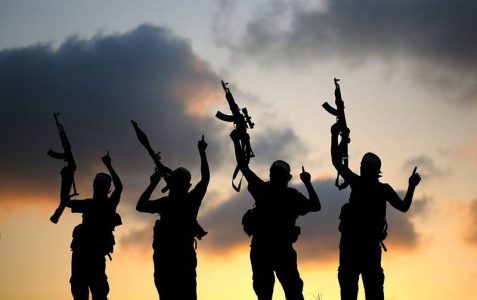
Nationals of Kyrgyzstan, Tajikistan and Uzbekistan lead splintered terrorist groups
Central Asian countries assess that their primary terrorist threat comes from their nationals who have travelled to the Syrian Arab Republic, Iraq and, to a lesser extent, Afghanistan, where they are affiliated with a number of terrorist organizations. Foreign terrorist fighters continue to attempt to travel to the conflict zone, albeit on a much smaller scale than in previous years.
Uzbek and Tajik migrant labourers in the Republic of Korea, the Russian Federation, Turkey and other countries that host large diaspora communities are targeted by online propaganda and recruitment, according to the the report prepared for UN Security Council.
Some members of these communities have attempted to join groups such as the ethnically based Katibat al-Tawhid wal Jihad (KTJ) and Khatiba Imam Al-Bukhari (KIB), which are active under the HTS umbrella in the Idlib area. KIB splintered into three groups following the death of its leader, Akmal Dzhurabaev, and the ensuing organizational challenges. The largest of these groups is led by Ubaydullo Muradoluogly, also known as “Abu Yusuf”, a national of Tajikistan. Two smaller groups are led by Alisher Tazhibaev, a national of Kyrgyzstan, and by Sulaymanov of Uzbekistan.
The number of fighters of KTJ has grown to 500. The group operates in the provinces of Hama, Idlib and Ladhiqiyah, in the Syrian Arab Republic. KTJ is the most combat-ready, best-equipped and best-financed Uzbek group. The Islamic Jihad Group is now under the full control of HTS. The group comprises between 30 and 40 ethnic Uzbeks and a smaller number of Turkish nationals. The Uzbek nationals arrived in the Syrian Arab Republic from Afghanistan.
In the Syrian Arab Republic and Iraq, approximately 1,500 fighters from Tajikistan joined established terrorist groups, with 600 believed to be alive still. Gulmurod Khalimov is considered their leader. He lost his position as the ISIL “minister of war” and is reported to be in Idlib. Central Asian nationals in the Syrian Arab Republic target Uzbeks and Tajiks in their native languages through online recruitment. This propaganda promotes travel to the conflict zone, fundraising and the establishment of sleeper cells in their home countries. In 2019, as a result of a joint operation conducted by special services of regional countries, 26 ISIL members, some of them returnees, were arrested.
Approximately 2,000 nationals of the Commonwealth of Independent States are detained in the north-east of the Syrian Arab Republic. Since the beginning of 2019, 524 nationals, almost all women and children, were repatriated by Kazakhstan, 156 by Uzbekistan and 84 by Tajikistan.
Central Asian countries remain concerned about the terrorist threat emanating from Afghanistan. In the north of Afghanistan, in Badakhshan Province, a number of Central Asian groups affiliated with Al-Qaida are operating. These include approximately 50 fighters with KIB, up to 100 with the Islamic Movement of Uzbekistan and up to 50 with the Islamic Jihad Group. The Eastern Turkistan Islamic Movement has an estimated 350 fighters. Jamaat Ansarullah, headed by Asliddin Davlatov, has up to 30 Tajik nationals. In total, approximately 100 fighters from Tajikistan are assessed to be based in Afghanistan.
All these groups operate under the auspices of the Taliban, mainly as instructors and explosives experts. In northern Afghanistan, Central Asian groups cooperate with organized criminal networks engaged in drug trafficking across the border between Afghanistan and Tajikistan, also using those routes to infiltrate fighters into Central Asia.
ISIL-K has a Central Asian contingent of approximately 200 fighters, led by Tajik national Sayvaly Shafiev, also known as “Mauaviya”. He is currently operating in Nangarhar Province, where he is a member of the ISIL-K leadership body, or shura. He seeks to recruit Tajik fighters and to raise funds using online propaganda in the Tajik language, says the report.
Source: Aki Press





